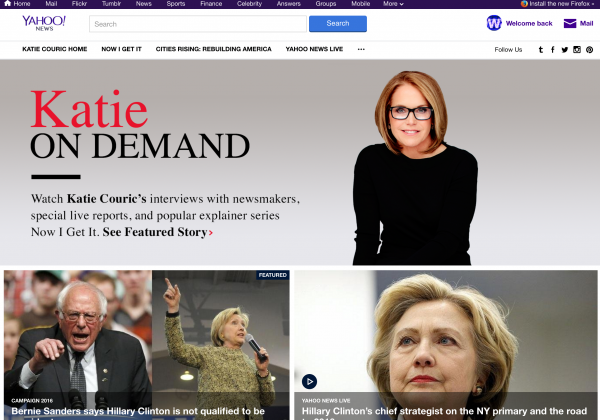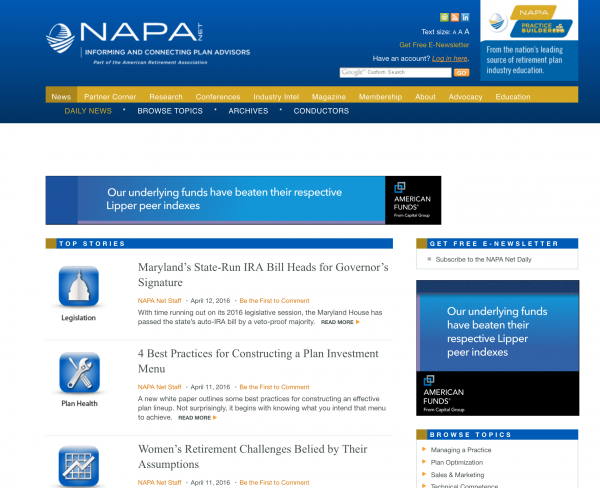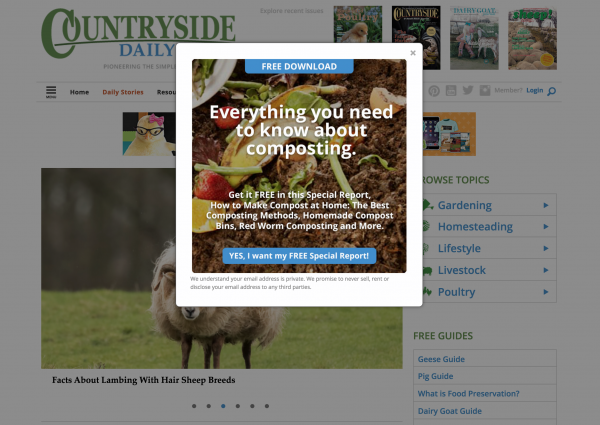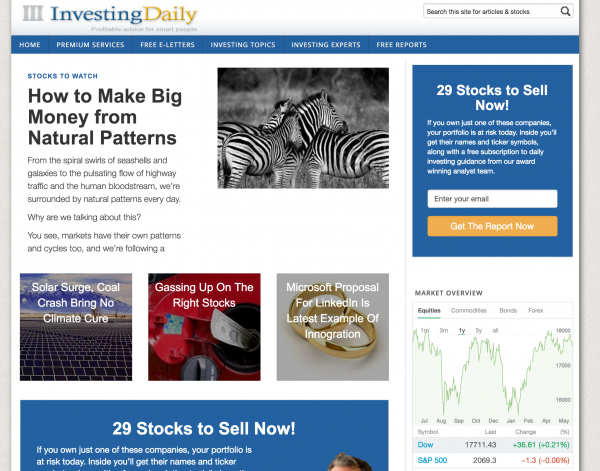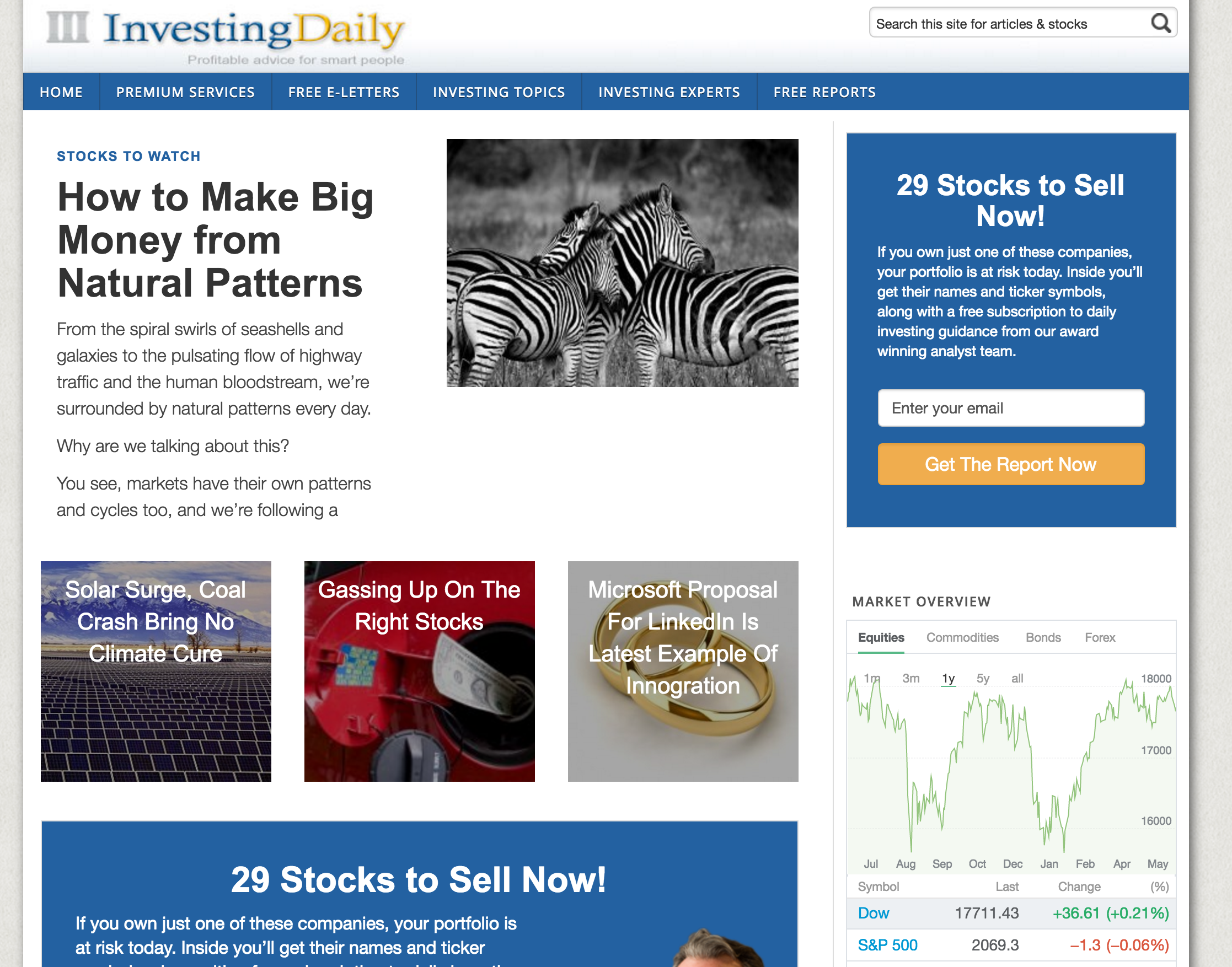
A Mequoda subscription website Portal generates value from both users and sponsors
Mequoda has guided the development of more than a 300 successful niche media websites on a wide variety of niche media topics. Our best practice is to pair a free subscription website Portal with any premium subscription business model like a magazine or newsletter.
When you charge a fee to access the content within a subscription website, the site needs to provide specific and immediate benefits to your subscribers. The most common premium subscription websites include Magazine Subscription Websites, Newsletter Subscription Websites, and Course Subscription Websites, to name a few.
[text_ad]
To provide the immediate benefits mentioned above, the subscription websites mentioned above are paired with a free subscription website Portal. The Portal is actually the most important subscription website archetype because it does all the heavy lifting.
Portals are intended to build and feed an audience for the premium site; they are specifically designed for SEO (free articles), email marketing, list building, and lead generation. They allow the publisher to attract new subscribers through free content and social media community building in order to drive traffic to the paid subscription websites.
Subscription website Portals generate value from both the users and the sponsors. Users pay – not with money (all website content is free), but with time and information. They spend time viewing web pages, emails, and RSS feeds, thus creating advertising inventory that can be used to sell the publisher’s products (internal advertising) and/or sold to third-party sponsors (external advertising) on a CPM (cost per thousand), CPC (cost per click), or CPA (cost per action) basis.
Examples of subscription website Portals
The Yahoo! brand is one of the largest web search and news portals – if not the largest portal– and provides access to email, news, shopping, web search, music, fantasy sports, and more than a dozen other online applications and services for consumers and businesses worldwide. As you may know, Yahoo! was recently purchased by Verizon.
At Yahoo! News, our mass media example of the portal, the news content is syndicated from outside sources but branded with the Yahoo! name. Since the last time we wrote about the news site, the company has beefed up its brand by hiring the renowned journalist Katie Couric as its own personal “global news anchor,” and, through Couric, actually delivers some of its own news reporting. Portal news is a cutthroat business, after all.
Revenue at the Yahoo News site derives from advertising and sponsorships, as it does at many portals.
At the other end of the scale, some niche media portal website business models include Countryside Daily and NAPA Net. These are portals designed to support the selling and potential sponsorship of premium content.
NAPA Net demonstrates that even niche portals can leverage portal advertising inventory, as seen in the display ad in the right rail, though its other features, including daily content, are similar to those at the other two examples of a subscription website Portal.
Countryside Daily also uses sections of its portal home page as advertising inventory. All three, though, clearly leverage the content and advertising inventory on these portals to convert visitors into email subscribers and potential paying subscribers or buyers of other products.
You could certainly call your free content something like “Email newsletters,” but you’ll confuse users who think email newsletters are premium products. Our Technology Group Leader Nancy Horan says that while Mequoda has always stressed clarity in architecture and naming, over the years adding the word “free” to content that is genuinely free has dramatically increased clicks. We see the word, “Freebies” used often and successfully, as well.
There’s no need for a paywall on a Portal, because free and paid content are so clearly separated.
Remember, a portal is intended solely to build an audience for your publication. They are specifically designed for SEO, email marketing, list building, and lead generation.
State-of-the-art portal subscription websites offer users free email newsletters, blogs, email alerts, and RSS feeds that are all designed to directly and indirectly generate more page views and website revenue.
InvestingDaily.com is a small portal that produces its own content but also pulls bylined content from other subscription websites in its own publishing family. The portal offers a blog, “Stocks To Watch,” and supplements that with news from third-party sites and original content from eight sister sites.
The publisher’s strategy is to use the website to build an email list via its dozen or so free newsletters and two-dozen free reports, and up-sell paid products, including 13 premium investing advisory services, to registered users. The site carries some display ads for its house products.
Characteristics of a portal
A portal has a number of individual characteristics, some of which it shares with other free website models.
Who pays: Sponsors – whether that’s a third party or the portal publisher itself – pay for all content on portals, which is free to registered users. This is the same as lead generation and directory sites.
MIU: The portal’s minimum information unit is a post. Posts may be written by various authors associated with the publisher, as they usually are on niche media sites, or by syndicated content providers as is the norm on mass media sites.
Frequency: Content on a subscription website Portal is updated constantly, as it is on community and lead generation sites.
User-Generated Content: A portal will have some user-generated content, such as Yahoo!’s Group and Answers content, but mostly the content comes from the publisher or syndicated sources.
Authors: There are many authors at a portal, including the publisher’s own staff and contributing sources. All of the free website business models boast many authors, from users at a community site to sponsors at a lead generation or a directory site.
Browse/Search: Like a community website, but unlike lead generation or directory site, the portal is organized so as to be searched by its users.
Home Page: With frequently updated content, a portal’s home page can deliver what’s new, as at a news site, or what’s popular, like why honey bees have been dying, and other topics users are most interested in. In Mequoda land, we always encourage our clients to consult their Google Visibility Report to find out what their readers are most often looking for. And of course, balance that with significant evergreen content.
Video: Like all but one of the other website business models, free and premium, the portal may or may not have videos onsite.
Remember, portals can be standalones, such as Yahoo! or HuffingtonPost.com, or they can also serve to help sell subscriptions to an affiliated magazine, such as Forbes at Forbes.com. When we create a Mequoda-designed subscription website for a client, we always have an associated portal.
Building audience with a portal website
As you’ve seen in all the examples above, each publisher portal offers a variety of free products in order to convert all the traffic they’re attracting into email newsletter subscribers.
The portals above created by successful publishers have been built using Mequoda 3C Architecture. This allows the publisher to capture the name and email address of the most interested visitors. This makes portals a highly valuable asset in the process of building email marketing lists.
Across all English-language Mequoda sites, which includes our clients, the average site-wide email capture rate is 2.5%. Compare that to the industry average, which is 0.1 percent or less. That means that on average, 2.5% of visitors who visit a site designed with with 3 C’s in mind will submit their email address.
Why?
- On our portals, we make it a rule to always give something back in return, like an ebook, white paper, video or even a knitting pattern (the same architecture without incentives sees a 50 percent drop in capture rate).
- We promote these freebies contextually, within blog posts of the same topics.
Ceramic Arts Daily currently has a few dozen “freebies” that they give away on their portal in order to collect email addresses and start their initial “hello” with potential buyers. In the past, CAD has told us these freebies can bring in a few thousand new email subscribers per month.
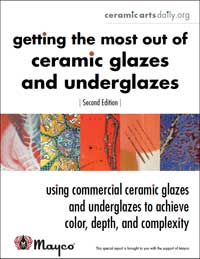 Freebies include downloadable ebooks like The Salt Glaze Surface: A Guide to Salt Glazing and Firing and Soda Firing Techniques, Tips and Soda Glaze Recipes, all of which have been optimized for search. The great thing about most of these downloads is that they’re evergreen and don’t need to be updated on a regular basis. This means that an eBook they launched six years ago can be one of their main traffic drivers and source of email leads.
Freebies include downloadable ebooks like The Salt Glaze Surface: A Guide to Salt Glazing and Firing and Soda Firing Techniques, Tips and Soda Glaze Recipes, all of which have been optimized for search. The great thing about most of these downloads is that they’re evergreen and don’t need to be updated on a regular basis. This means that an eBook they launched six years ago can be one of their main traffic drivers and source of email leads.
Since Ceramic Arts Daily is built in the Mequoda way – to use text ads, OFIEs and floaters to convert visitors into email subscribers. We won’t divulge the size of their current list, but it’s impressive. And while most niche publishers hit a plateau in their subscribers after they’ve really penetrated the market (say, six years in, perhaps?), CAD is still going strong.
Their strategy in the past has been to release one new freebie per month and promote them to their newsletter list as well as through their OFIEs and floaters on their portal ceramicartsdaily.org. Since they are promoted through a newsletter list, the most popular in any given month is the newest release, though some topics like glaze recipes, tend to keep a more steady pace.
Here at Mequoda, we can never stress enough the value of a free portal to any subscription website, no matter what archetype it is. It’s the key to driving website traffic, it helps you convert random visitors into email subscribers, and it keeps paid customers engaged with your content.
But just because it’s free to your users doesn’t mean it’s easy to create and maintain. The centerpieces of a portal are your regular, frequently updated, concise posts. And that’s a style of journalism that few magazine publishers understand.
Portal posts are not always long-form, labor-intensive, research-heavy reporting. They’re often a short-form, summarized digesting of the latest news in your domain.
That’s why newsletter publishers, unlike magazine publishers, completely understand this model – after all, that’s what they’ve always done. So, you still want a robust portal to drive traffic, convert visitors to subscribers and keep your audience engaged every day?
How to hire the right person to manage your portal
One of your first priorities when launching a new portal is to hire the right person to write and maintain your portal. This job is known as the audience development editor, daily editor, even community manager.
Because content development is a large part – though not the only part – of the job, you could start by seeking a newsletter journalist. This person will be familiar with the task of researching and compiling concise but compelling posts quickly and efficiently.
The Mequoda audience development editor job description references the content part of the job this way: “Works with content partners to create tips, information product reviews and website reviews for use in the [Company Name] website network, email newsletter and content syndication.”
And if you can find someone with these skills who also has experience as a direct mail copywriter and is familiar with your domain, you’ve hit the jackpot.
Another good bet would be an established professional blogger in your domain, because bloggers have to market themselves in order to sell advertising, and must understand SEO and other key metrics that are part of the job.
In conclusion, Mequoda has identified many content business models, but the one that’s most crucial to any magazine is the portal – this is where the magic happens.
